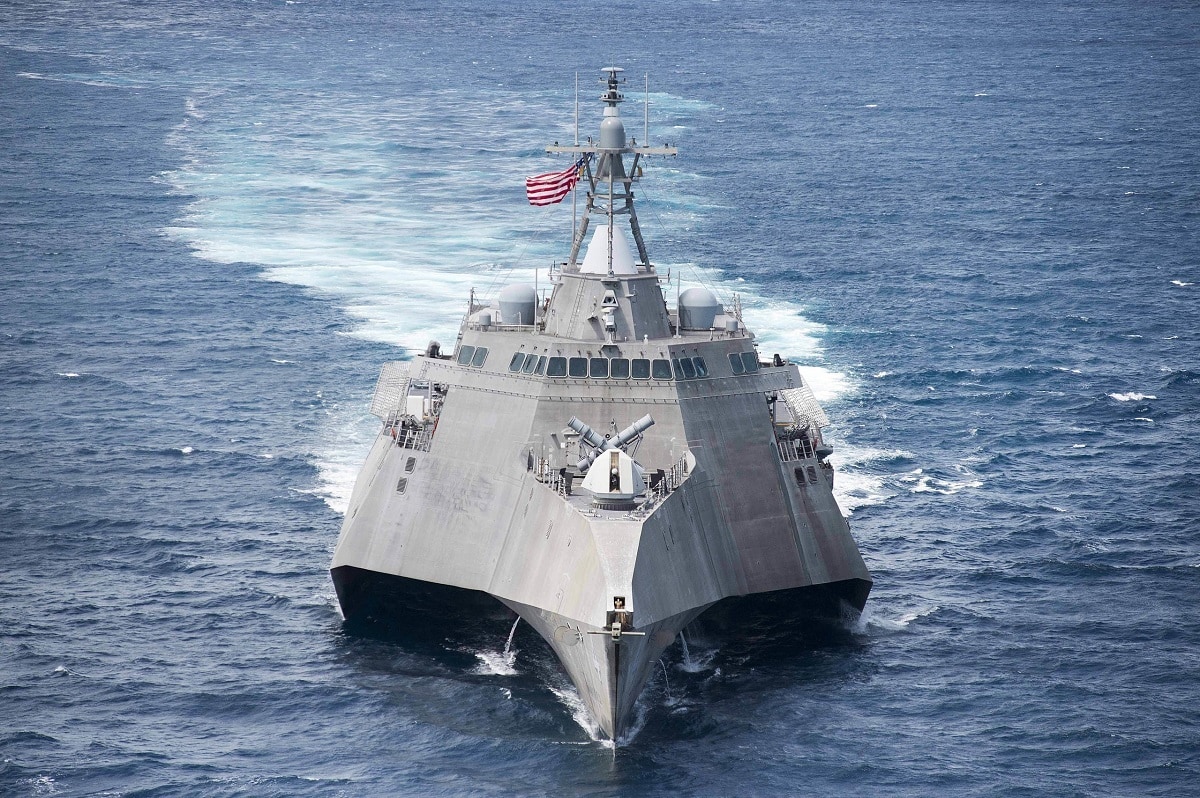In a ceremony earlier this month, the United States Navy commissioned the latest Independence-variant littoral combat ship (LCS), USS Oakland (LCS 24). Navy leaders, Oakland city officials, and a socially distanced audience attended the event for the third ship in naval service to be named in honor of the California city.
Acting Secretary of the Navy Thomas W. Harker delivered the ceremony’s principal address.
“We now have a finished warship behind us that is ready to be placed into commission,” Harker told the attendees. “This ship is a marvel of engineering, which will extend our capabilities for any mission across the blue water, from shoreline to shoreline.”
Other guest speakers at the commissioning ceremony included U.S. Naval Academy Superintendent Vice Adm. Sean Buck, Program Executive Office Rear Adm. Casey Moton, Austal USA Vice President Larry Ryder and Mayor of Oakland Libby Schaaf.
USS Oakland‘s commanding officer, Cmdr. Francisco X. Garza, reported the ship ready.
“I am incredibly proud of this crew for their dedication to shipmate and ship as we worked toward the commissioning of USS Oakland,” said Garza. “We are honored to carry the name ‘Oakland’ into the fleet.”
Two previous vessels had carried the name USS Oakland including a transport cargo ship that joined the fleet in 1918, while the second was a light cruiser that saw service during the Second World War, earning a total of nine battle stars.
An Independence-class Littoral Combat Ship
While named for the busiest port in the San Francisco Bay, USS Oakland will actually be homeported a bit further south in San Diego, along with other littoral combat ships USS Independence (LCS 2), USS Coronado (LCS 4), USS Jackson (LCS 6), USS Montgomery (LCS 8), USS Gabrielle Giffords (LCS 10), USS Omaha (LCS 12), USS Manchester (LCS 14), USS Tulsa (LCS 16), USS Charleston (LCS 18), USS Cincinnati (LCS 20), and USS Kansas City (LCS 22).
The U.S. Navy currently operates two different LCS variants – which are constructed by Lockheed Martin and General Dynamics respectfully. Each defense contractor was tasked with developing the system design and options for the LCS platforms. Despite both being part of the larger LCS effort, the two designs are quite different. The Freedom-class design, which was proposed by a consortium founded by Lockheed Martin as the prime contractor and Fincantieri through its Marinette Marine subsidiary, was developed as a high-speed, semi-planing mono-hull.
The Independence-class design evolved from a project originally conceived by defense contractor Austral, and is produced by General Dynamics, features a trimaran with a slender stabilized mono-hull. The Independence-class variant – of which USS Oakland is the latest to join the fleet – is the larger of the two classes and has a displacement of 3,000 tons. The warships are some 419 feet in length, with a beam of 103.7 feet and a draft of 14.1 feet.
The core self-defense includes 3D air search radar, Rolling Airframe Missile, Medium caliber gun, electro-optic/infrared gunfire control system, and decoy launching system. From its flight deck, it can support the operation of two SH-60 Seahawk helicopters or multiple UAVs.
Thirteen of the planned nineteen Independence-class LCS warships have been completed to date.
Peter Suciu is a Michigan-based writer who has contributed to more than four dozen magazines, newspapers and websites. He regularly writes about military small arms, and is the author of several books on military headgear including A Gallery of Military Headdress, which is available on Amazon.com.

